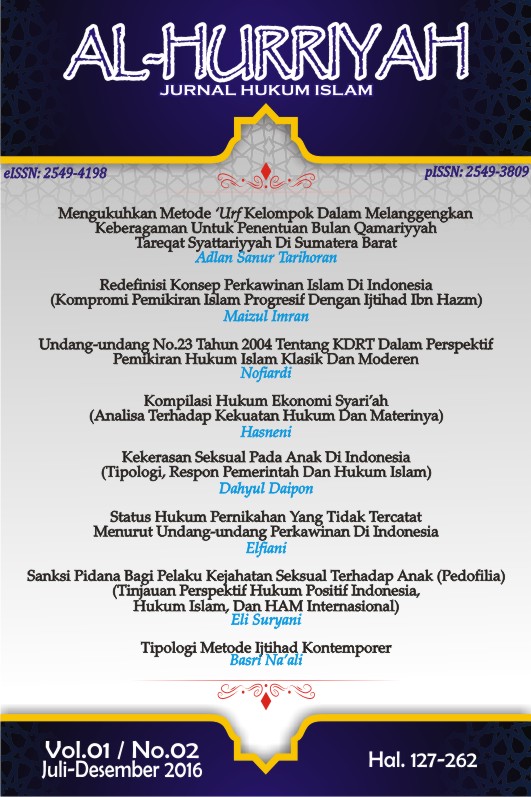organic livestock farming
DOI:
https://doi.org/10.30983/alhurriyah.v1i2.5241Keywords:
agronomy, horticulture, livestockAbstract
Seorang petani yang memiliki ternak sebagai bagian dari pertanian organiknya tidak perlu membeli lebih banyak produk penggabungan tanah. Di peternakan, limbah ternak dapat digunakan seperti halnya pupuk kandang. Kotoran dari susu dan unggas, menurut Penelitian dan Pendidikan Pertanian Berkelanjutan , memiliki efek pengapuran dan benar-benar menangkal pengasaman. Memasukkan kotoran hewan yang dapat diterima secara lingkungan dapat bermanfaat dalam berbagai cara, menurut laporan tersebut.
Struktur tanah yang lebih baik, misalnya, menyebabkan peningkatan infiltrasi air, kapasitas menahan air yang lebih baik, retensi nutrisi yang baik, dan peningkatan keragaman mikroba. Kapasitas untuk katalisis dan pH tanah keduanya dipengaruhi secara positif.
Menurut 'Komunitas Pembelajaran Lingkungan Ternak dan Unggas', pupuk kandang yang diterapkan dengan tepat berpotensi memberikan berbagai manfaat lingkungan, termasuk peningkatan kadar karbon tanah dan kadar karbon atmosfer yang lebih rendah, pengurangan pencucian nitrat, dan pengurangan erosi tanah.
Aplikasi permukaan pupuk organik bertindak serupa dengan sisa tanaman, menurut percobaan di lapangan. Pupuk kandang, seperti sisa-sisa pertanian, dapat melapisi permukaan tanah dan mencegah erosi yang disebabkan oleh hujan.
References
Assessment, US EPA National Center for Environmental. Nutritional Management in Organic Livestock Farming for Improved Ruminant Health and Production - An Overview. 15 Mar. 2009, https://hero.epa.gov/hero/index.cfm/reference/details/reference_id/8176717.
Chander, M., et al. “Organic Livestock Production: An Emerging Opportunity with New Challenges for Producers in Tropical Countries.†Revue Scientifique Et Technique (International Office of Epizootics), vol. 30, no. 3, Dec. 2011, pp. 969–83. PubMed, https://doi.org/10.20506/rst.30.3.2092.
DATCP Home Organic Farming and Food. https://datcp.wi.gov/Pages/Growing_WI/OrganicFarmingAndFood.aspx. Accessed 11 Jan. 2022.
“Help for Organic Farming.†National-Content, https://fsa.usda.gov/programs-and-services/outreach-and-education/help-for-organic-farming/index. Accessed 11 Jan. 2022.
Livestock & Pasture Management | NRCS. https://www.nrcs.usda.gov/wps/portal/nrcs/detail/national/organic/?cid=nrcseprd1365253. Accessed 11 Jan. 2022.
Manuelian, Carmen L., et al. “Organic Livestock Production: A Bibliometric Review.†Animals : An Open Access Journal from MDPI, vol. 10, no. 4, Apr. 2020, p. 618. PubMed Central, https://doi.org/10.3390/ani10040618.
Organic Crops | RMA. https://www.rma.usda.gov/en/Topics/Organic-Crops. Accessed 11 Jan. 2022.
“Organic Farms Listing.†CT.Gov - Connecticut’s Official State Website, https://portal.ct.gov/DOAG/Marketing/Marketing/Organic-Farms-Listing. Accessed 11 Jan. 2022.
“Organic Foods and Farming.†Agriculture and Markets, https://agriculture.ny.gov/farming/organic-foods-and-farming. Accessed 11 Jan. 2022.
Organic Livestock | Alternative Farming Systems Information Center | NAL | USDA. https://www.nal.usda.gov/legacy/afsic/organic-livestock. Accessed 11 Jan. 2022.
Organic Livestock and Poultry Practices | Agricultural Marketing Service. https://www.ams.usda.gov/rules-regulations/organic-livestock-and-poultry-practices. Accessed 11 Jan. 2022.
Organic Livestock Production – Idaho State Department of Agriculture. https://agri.idaho.gov/main/about/about-isda/ag-inspections/organic-certification-program/organic-livestock-production/. Accessed 11 Jan. 2022.
Organics. https://www.texasagriculture.gov/regulatoryprograms/organics.aspx. Accessed 11 Jan. 2022.
USDA - National Agricultural Statistics Service - Surveys - Organic Agriculture. https://www.nass.usda.gov/Surveys/Guide_to_NASS_Surveys/Organic_Production/. Accessed 11 Jan. 2022.
USDA ERS - Organic Agriculture. https://www.ers.usda.gov/topics/natural-resources-environment/organic-agriculture.aspx. Accessed 11 Jan. 2022.
Downloads
Published
Issue
Section
Citation Check
License
Authors who publish with this journal agree to the following terms:
- Authors retain copyright and grant the journal right of first publication with the work simultaneously licensed under a Creative Commons Attribution-ShareAlike 4.0 International License that allows others to share the work with an acknowledgment of the work's authorship and initial publication in this journal.
- Authors are able to enter into separate, additional contractual arrangements for the non-exclusive distribution of the journal's published version of the work (e.g., post it to an institutional repository or publish it in a book), with an acknowledgment of its initial publication in this journal.
- Authors are permitted and encouraged to post their work online (e.g., in institutional repositories or on their website) prior to and during the submission process, as it can lead to productive exchanges, as well as earlier and greater citation of published work (See The Effect of Open Access).






